

|
简约风格 Minimalism Style | ||||||||||||||||||||||||||
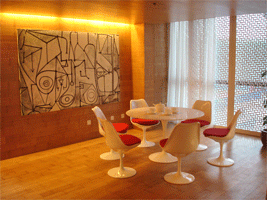 |
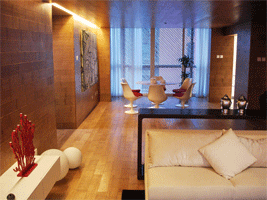 |
|||
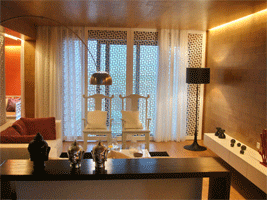 |
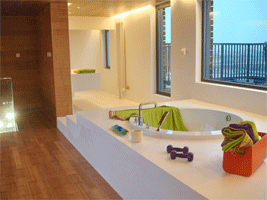 |
|||
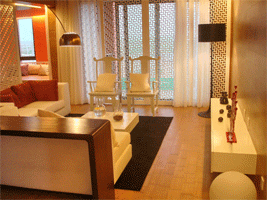 |
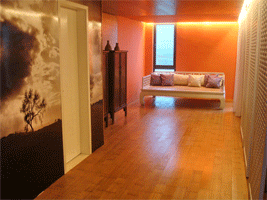 |
|||
| 在理论和实践中,二十世纪九十年代近期的建筑也许有更广泛而分散的内容,却没有其自身精确的定义。尽管如此,它还是为一个曾广泛应用的思潮保留了一席之地,作为对于那些过分教条和正统主义的一种回应,这就是:简约主义。当我们说到“简约主义者的建筑”一词时不能不提到简约艺术,一种六十年代出现在北美的当代雕塑运动,一种在当时特定的社会文化媒体的推动下产生的一种反应,特别是对当时的艺术氛围中产生的各种运动的一种严肃回应,比如抽象表现主义,波普艺术,行为艺术等。 因此一种多样化的艺术表现形式,由基本的,极具挑战性的研究和实验相结合的成果,带着用最简单的方法吸引最大的注意力的目的出现了。实际上,简约艺术作为一种强大的线索,用最简单的、基本的几何构架作为一种正式的表达方式来寻找核心内涵,而忽略了装饰元素。用这种方法,各种暗示和参考都被排除,除非是在一个特定的地方模拟自然生物形态---一种系列化工业生产过程的清楚暗示---或是材料自然属性的选择(不管是传统的还是工业化的),来建立起与地理位置、场地现状、周围环境等各种复杂因素之间的关系。一般说来,简约主义是在建筑的删减过程中来寻找空间,光线和形式的核心内涵,而不是机械地减少、否定、忽视装饰物,或用一种清教徒的方式处事...尽管如此,一种对此肤浅的理解或许会导致一些程式化的偏见或者一系列常规习俗看法,这些都使“简约主义”这个词的复杂含义过分简单化而放弃了对其文化内涵的了解。简约主义者的建筑不象简约艺术---着眼于一些事先建立起的概念---它缺少一种社会思想体系基础---只是用当代建筑的一些抽象形式,成为其附加和延续,并作为一种工具在当前的建筑实践中被广泛运用,比如一方面是对材料面层的严格要求,另一方面则是清洁性能的要求,并建立起与现场环境之间密切的对话(使它们获得发展与改变并获得新的属性),通过强调质量来寻求一致。(资料来源:《简约主义者的室内设计》序言) |
||||
| Both in theory and practice, recent
nineties architecture may be placed in a broad, diffuse context that does
not lend itself to precise definition. Even so, it has kept a place for
one of the trends that has been applied progressively as a response to over
abundance in the use of certain eclectic idioms and to excessive deconstructivist
formalism:Minimalism. When confronted with the term"minimalist architecture",
we are bound almost inevitably to turn to Minimal Art, a contemporary sculpture
movement that emerged in North American in the sixties as the reaction to
a set of pressures in specific social and cultural media; and especially
as a critical response to the artistic climate created by movements of the
time such as Abstract Expressionism,Pop Art, and Op Art. Thus, a diversified artistic output, fruit of an accumulation of radical,challenging research and experimentation, emerged with the purpose of obtaining maximum tension with minimal means. Indeed, Minimal Art as a consolidated strand seeks the essential through the use of simple, elementary geometrical structures as a formal vehicle, and through the absence of decorative elements. In this way, all allusions or references are excluded, except in the repetition of forms as a physical presence in a specific place---a clear allusion to the process of industrial production in series---or the choice of the nature of the material(either conventional or industrial) in order to set up relationships with the location, the site, the mass, the surroundings,and so on. In general terms, Minimalism is based on a process of reduction of architecture down to its essential concepts of space, light and form, rather than on mechanisms of subtraction, negation, or absence of ornament, or on a eulogy of puritalism... Even so, a superficial reading of this might lead to the mistaken idea of predetermined appearances or a series of conventions(such as white monochrome or the cult of the void), which would enormously oversimplify the complexity of the term"Minimalism" and give way to its introduction into any cultural context. Unlike Minimal Art---with its critical sights aimed at preestablished concepts---minimalist architecture---which lacks any kind of social ideology---is an appendix or continuation, with extreme formal abstractions, of some aspects of contemporary architecture, emerging as a widely used tool in current architectural practice, providing examples on the one hand of stringent sophistication in the finishes of materials, and of technical cleanliness on the other. It sets up an intense dialogue with the site and its surroundings(to the extend of transforming them and endowing them with a new identity),and seeks unity through repetition as a guarantee of quality. |
||||
| 范思设计公司 版权所有 北京邮政100101-200信箱 (100101) 客服中心:+86-10-64956392 电邮:13911624921@139.com |